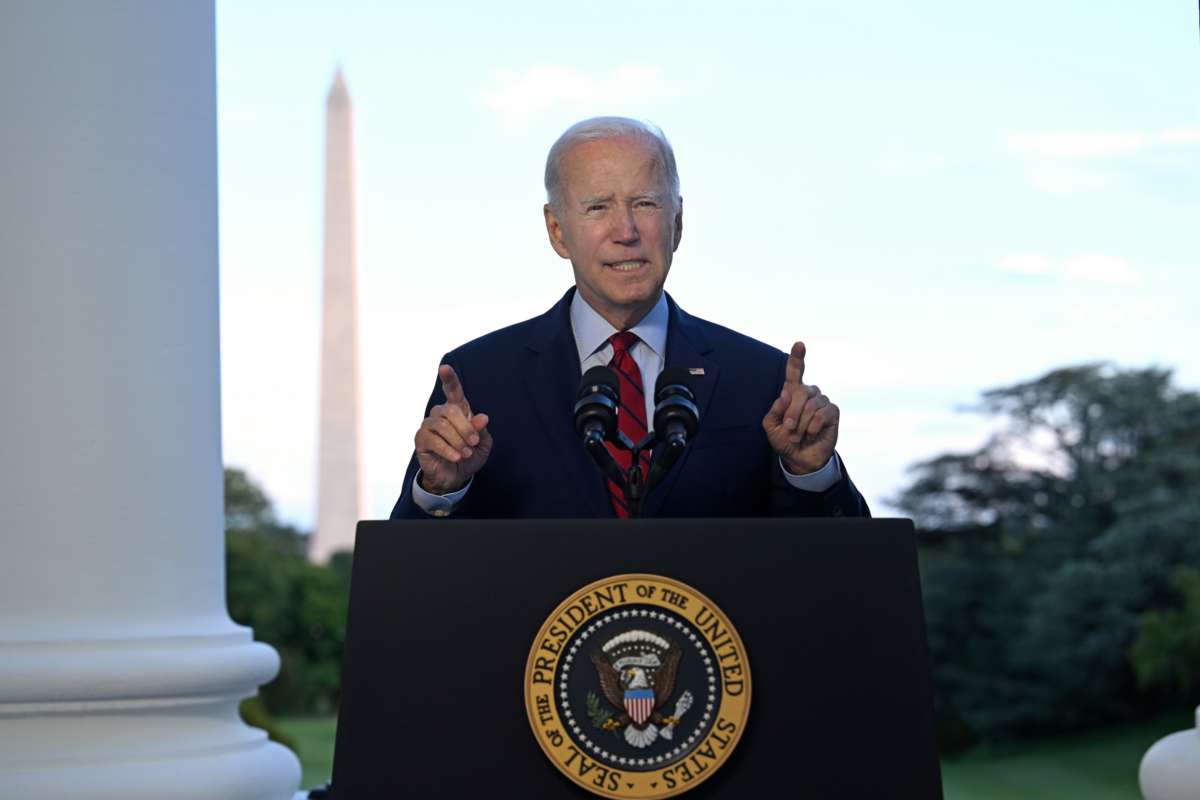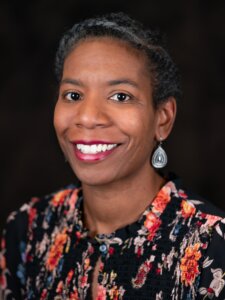
BY Alyssa Bowen,
As underscored by Kansas voters’ resounding decision this week to reject right-wing efforts to strip abortion rights from their state constitution, the deadly overturn of Roe v. Wade is wildly unpopular among many voters across the country.
But the same right-wing groups that helped to capture the Supreme Court — backed by ultra-wealthy donors they keep secret from the public — are working overtime to convince us that the overturn of Roe isn’t as dangerous as so many of us know it to be. Using dark money, they are mobilizing to reframe and cover over this anti-democratic, Christian-right coordinated effort to dominate our political system.
The far right faction of the Supreme Court that handed down the Dobbs v. Jackson Women’s Health Organization decision overturning Roe was put in place by a massive dark money web coordinated by Federalist Society fundraiser and right-wing Catholic lawyer Leonard Leo. His network has raised nearly $600 million in secret funding since 2014, not counting the past year. Leo himself hand-selected for Donald Trump three of the five justices that ruled to overturn Roe, and worked to get the others installed on the court. All the while, his affiliated dark money groups worked intensively to push the Trump nominees onto the bench, despite widespread and deep concerns about their fitness to be judges.
Leo predicted the success of his agenda in a speech to funders of the secretive Christian-right Council for National Policy in reversing precedents and turning back Americans’ rights to the pre-New Deal/robber baron era. He bragged that “no one in this room has probably experienced the kind of transformation that I think we are beginning to see” in rulings by the court.
Leo’s network cannot be entirely separated from the dark money web of fossil fuel billionaire Charles Koch, who is a major funder of the Federalist Society and many of the groups that have filed amicus briefs with the Supreme Court this term and in previous terms. Koch’s Americans for Prosperity organization spent millions to support the confirmation of Trump appointees, including Amy Coney Barrett, the daughter of a man who worked for decades as a fossil fuel industry lawyer. It’s no great mystery why. Koch’s company, Koch Industries, will likely reap untold billions from decisions favoring the carbon industry, like the reactionary edict recently handed down by the Court’s right-wing faction in West Virginia v. EPA.
Some of the same dark money groups that helped overturn Roe have their sights set on attacking other fundamental rights. At the same time, however, some of the groups belonging to these dark money networks are strategically attempting to market bogus ideas to the public that downplay the severity of the overturn of Roe, even as it will result in a wave of forced births and maternal deaths. Here are some of the bogus claims they’re trying to push:
Bogus Claim #1: The Overturn of Roe Won’t Hurt Anyone
Research has shown that abortion bans, like those that went into immediate effect in 22 states following the overturn of Roe, could lead to a 21 percent increase in pregnancy-related deaths in a country that already has one of the highest mortality rates in the industrialized world.Some of the same dark money groups that helped overturn Roe have their sights set on attacking other fundamental rights.
Yet, dark money actors like Erin Hawley — an anti-abortion zealot who is co-counsel for the anti-LGBTQ hate group Alliance Defending Freedom (ADF) in its legal assault on Roe — are being given national platforms to convince the public otherwise. Hawley recently testified as the GOP minority witness on the impact of Roe’s overturn before the Senate Oversight and Reform Committee where she peddled disinformation.
One example was her medically false claim that abortions for nonviable ectopic pregnancies are not abortions. She also claimed that women and other pregnant people will not be harmed by being forced to carry a pregnancy to term, even though doing so is riskier than an abortion. Moreover, Hawley ignores the psychological harm that would be done to rape victims forced to carry their pregnancy to term, the economic harm done to those who would otherwise choose to abort a pregnancy, the harm done to those forced to stay tied to abusers due to a forced pregnancy, and many other harms.
Hawley, who is married to insurrectionist Sen. Josh Hawley (R-Missouri), has taken in $617,000 from the Koch-funded Independent Women’s Forum (IWF), where she is a legal fellow. IWF and its sister organization have received more than $5 million from Leo’s dark money network since 2014. Hawley’s other employer, ADF, also received six-figure Koch funding, according to the most recent IRS filings.
Meanwhile, right-wing dark money actors are working to discredit the horrific implications of the reversal of Roe. Perhaps the best-known example is the effort by dark money groups to discredit the true story about the 10-year-old rape victim who was forced by the Ohio abortion ban (that went into effect after the overturn of Roe) to travel to Indiana where abortions are still legal.
Right-wing pundits, like IWF fellow Emily Jashinsky, threw doubt onto the veracity of the story that was published by the well-established Indianapolis Star paper. (The Washington Post also questioned the story.)
The story was quickly proven true, but despite the veracity of this and other cases where lives were endangered by abortion restrictions, Christian-right reactionaries are denying any harm is being done by the bans. Alexandra DeSanctis Marr, a visiting fellow at the dark money Ethics and Public Policy Center (EPPC), which has also received funding from the Koch fortune and Leo network, accused “abortion supporters” of inventing “horrifying hypotheticals” to undermine abortion restrictions.
This appears to be an attempt both to deny reality and chill accurate reporting about the dystopian reality of post-Roe life. (Notably, EPPC’s senior fellow Ed Whelan promoted his own wild conspiracy theories about Christine Blasey Ford in his support for Kavanaugh’s confirmation.)
Bogus Claim #2: Anti-Choice Zealots Will Secure Comprehensive Aid for People Forced to Give Birth
Some dark money court capture groups also appear to be trying to salvage the reputation of the GOP and the Christian nationalist movement by claiming they will secure aid for people forced to give birth against their will. Going into the midterms, the GOP’s strategy appears to center on fomenting a culture war in which it claims to be the party of “parental rights,” even as it blocks people from choosing abortion and determining if and when they become parents. Its legislative leaders have also repeatedly blocked popular, common-sense measures like comprehensive paid family and medical leave, increased child care access and credits, and expanded access to health care.Research has shown that abortion bans could lead to a 21 percent increase in pregnancy-related deaths.
Since Roe was overturned, various GOP politicians have rushed to announce proposals that are promoted as “pro-parent” or “pro-woman.” Susan B. Anthony Pro-Life (SBA), a powerful anti-abortion group, even sent a memo to GOP lawmakers with talking points urging them to “demonstrate that the pro-life movement cares not only about the unborn child but about the mother as well.” (SBA spent big backing all of Trump’s extreme Supreme Court nominees who were hand-picked by Leo, and Leo’s network has contributed millions to SBA in recent years.)
One example of such posturing is the “earned leave” bill of Senator Marco Rubio (R-Florida), which was reintroduced the same day that Roe was overturned. A “messaging” bill peddled by the Independent Women’s Forum, it is intended to provide a right-wing alternative to paid family and medical leave. In reality, it would punish parents by acting as a loan from Social Security to take time to care for their newborn or newly adopted child, which would force them to retire later or take a lifelong cut to their retirement benefits if they cannot pay back the loan sooner. As the Los Angeles Times reported, Rubio’s plan would even require the Social Security system to “claw back any leave benefits that haven’t been repaid from retirement checks — say because the beneficiary died before reaching retirement or before the full amount was repaid.”
Unlike IWF’s messaging bill, the progressive paid Family and Medical Leave proposal is not a loan and does not borrow from Social Security. Moreover, it provides access to financial support not only to those caring for new children, but also in situations where a parent, child, spouse or oneself becomes seriously ill.
Some of the dark money-funded anti-choice groups are also trying to rebrand “crisis pregnancy centers,” which are well known for spreading anti-abortion disinformation and otherwise pressuring those seeking abortions to continue the pregnancy, as “pregnancy help” centers.
Answering such calls, a coalition of anti-abortion groups — including the Leo-tied Students for Life, the Koch-funded Alliance Defending Freedom, and the Koch-funded Turning Point USA — will host a virtual event this month highlighting all of the “free services” pregnancy crisis centers offer, such as free ultrasounds (which are often used to pressure women out of abortions), “parenting programs” and “sexual risk avoidance education,” which is more widely known as abstinence-only education.
Notably, Senator Hawley introduced the “Pregnancy Resource Center Defense Act,” which would make it a felony crime to deface “pregnancy centers.” ADF and Erin Hawley promoted that bill. By contrast, Senator Hawley has taken no steps to hold accountable those who defaced the Capitol, including urinating and defecating in its halls and causing millions in damage, and has even fundraised off of his fist pump in support of the insurrectionists.
Bogus Claim #3: Dobbs Isn’t Part of a Broader Assault on Our Rights
Susan B. Anthony Pro-Life and Students for Life have sought to make abortion illegal nationwide, and leaders of Students for Life and Alliance Defending Freedom have pushed to ban abortion even in the case of rape or incest. But if that weren’t extreme enough, right-wing dark money agents are also trying to convince the public that the outrageously unpopular overturning of Roe is not the beginning of the destruction of other constitutional rights.As right-wing dark money groups try to whitewash the very real and truly dangerous consequences of overturning Roe, it is more important than ever to shine a light on their detrimental efforts.
Heather Higgins, the Vicks VapoRub heiress and chair of IWF (a group launched to defend Clarence Thomas’s nomination to the Supreme Court as he was accused by Anita Hill and others of sexual harassment), has claimed that “the left is deliberately misrepresenting both what conservatives believe and what the Supreme Court said in the Dobbs decision,” as “it in no way affects the availability of safe contraceptives, which GOP voters nearly unanimously see as a good thing.”
Despite Higgins’s claims, the reality is that Justice Thomas made clear that destroying other constitutional rights was his objective. In his concurrence on Dobbs, he argued that Sam Alito’s majority court decision to attack the “right to privacy” doctrine that undergirded Roe means that other constitutional rights, like gay marriage and access to contraception, should also be considered for reversal. The right to privacy also protects interracial marriage from state bans.
Higgins has also publicly attacked the Right to Contraception Act that would create federal protections for birth control, claiming that the bill is about “redefining contraception so broadly that it includes abortion and sterilization.” IWF, a documented pay-to-play group, has tried to position itself as pro-contraception because it has backed Big PhRma’s effort to make birth control pills available over the counter, even though its key leaders and fellows celebrated the Dobbs ruling.
Higgins’s talking point that access to contraceptives is not at risk based on this ruling has been echoed by other anti-abortion zealots, like Students for Life, even though they have attacked the availability of birth control pills and IUDs, taking the position that devices and pills that can prevent implantation of a fertilized egg are so-called “abortifacients.” (Notably, this issue came up in the hearings on Kavanaugh’s nomination, because he had accepted a litigant’s argument that the Affordable Care Act could not require businesses to provide employees with access to contraceptives that it believed to be abortifacients, which would limit constitutional protection for the most effective forms of birth control.) The overwhelming majority of Americans strongly support protecting access to birth control pills and devices like IUDs.
As right-wing dark money groups try to whitewash the very real and truly dangerous consequences of overturning Roe, it is more important than ever to shine a light on their detrimental efforts to invalidate Americans’ concerns about abortion access and the likelihood that this is only the beginning of the right-wing efforts to turn back our rights.
Note: True North Research Executive Director Lisa Graves and fellow Ansev Demirhan contributed to this report.
Alyssa Bowen received her Ph.D. in history from the University of North Carolina, Chapel Hill. She is managing editor and senior researcher for the progressive watchdog group True North Research where she tracks and writes about dark money in U.S. politics. She has bylines in The Nation, Rewire New Group and Ms. Magazine and is a regular contributor to Truthout.











